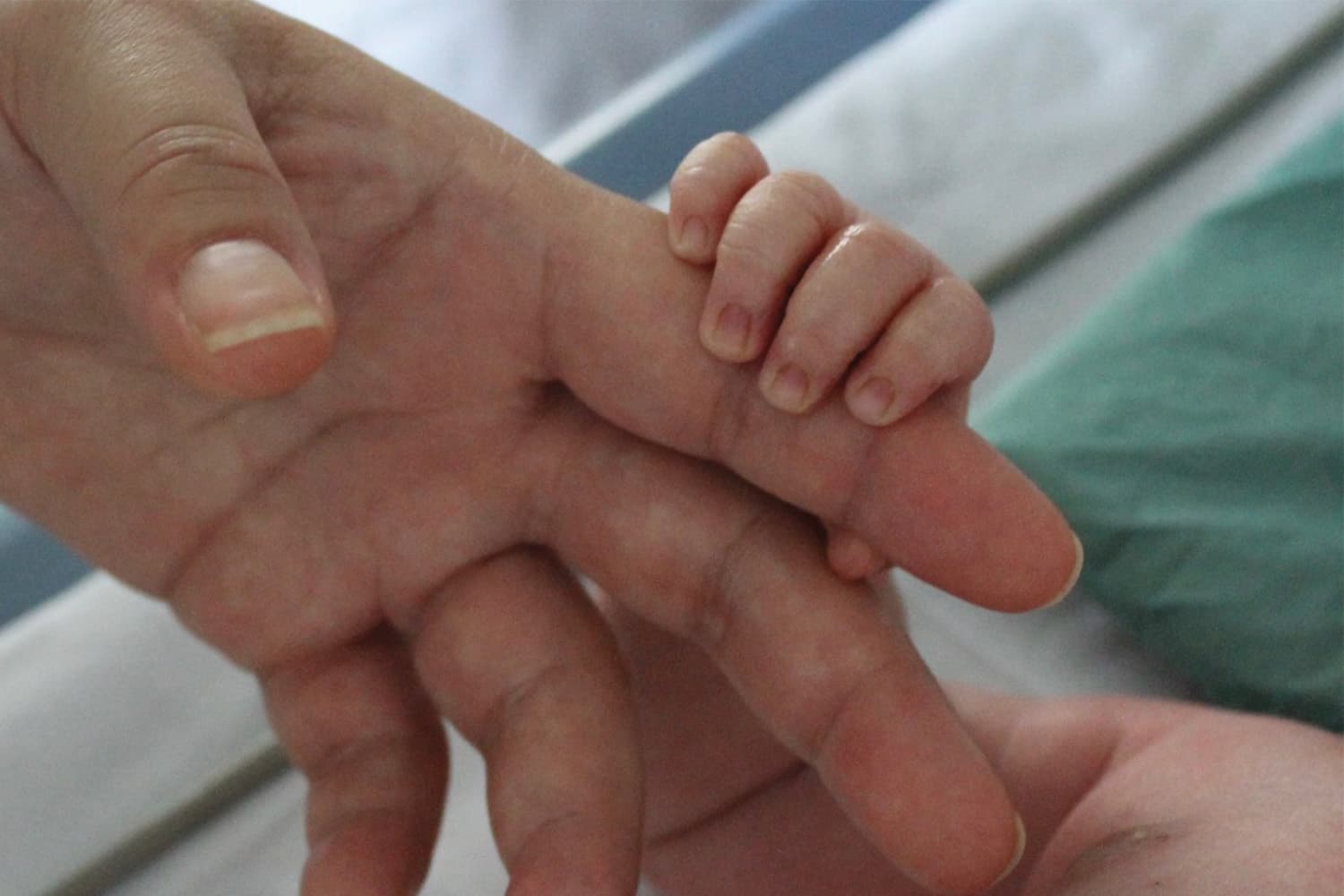No One Wants to Be a Grief Warrior
But with the help of healers and my family’s Indigenous and Jewish traditions, I found strength in recovering from my son’s death.
The author’s baby son holding her finger
When I was asked to write for this magazine championing sustainability, I first thought of writing about land defenders and water protectors, thought leaders and body healers. But the voice that called out inside me, asking to be heard, was that of a traumatized broken mother who has now grown into a fierce grief warrior.
Recently, I gave a talk to the current cohort of the American Indian College Fund’s women’s leadership program. The talk was called “Becoming a Grief Warrior” and it was about my journey of healing after the death of my son. In hindsight, the title is a bit self-aggrandizing. But I figure it’s okay to celebrate yourself for becoming something no one actually wants to be. Calling myself a “grief warrior” allowed me to find strength in an experience I really believed would destroy me. I think you can call yourself whatever the hell you like, if that self-talk is a means of your survival.
So, what is a grief warrior? I’m not sure where the term came from. At first I thought I’d made it up, because I’d never heard anyone else say it. But I later learned some people use the term to describe an approach to processing death and loss that challenges members of a grief-illiterate society to stand up, speak up, and share their pain. It asks those who are hurting to own it and honour it, and at the same time asks others to bear witness and hold space for the grieving ones.
In this regard, I was lucky to be born to Indigenous and Ashkenazi Jewish parents. Both cultures have healthy, communal grieving rituals. In the Jewish tradition, we sit shiva, creating a safe place for mourners to be surrounded by family and friends in the immediate aftermath of loss. In Anishinaabe culture, we have sacred fires and sweats and prayers that connect us to the spirit world. In both communities, we don’t shy away from death. We give it space and time. We give it conversation and laughter. We allow the tears and the wailing. We share pictures and stories and food. So much food.
But even with those supports, I was frightened to return to the world after my son’s death. I was afraid to resume my acting career after a year off; to pick up our older son from daycare, where other kids’ siblings always seemed to be in my face; to get to the gym to help my body recover from a horrific birth; to trust any medical professional while in the midst of a coroner’s inquest and five-year lawsuit with the hospital. The world was a scary place. People making innocent, hurtful comments was a daily reality. And no amount of smudging or yahrzeit candles could prepare me to re-enter society. I needed to arm myself.
We give grief space and time. We give it conversation and laughter. We allow the tears and the wailing.
My husband and I sought out spiritual warriors who could help us: mental health practitioners, spiritual teachers, medicine people, baby-loss support groups, somatic healers, PTSD and trauma recovery programs, even equestrian therapy. We tried everything. We gave ourselves permission to make our healing the most important thing in our lives. I remember saying in those early days, “We need to plant this pain in a good way or else it will grow into something unbearable.”
Everything we learned helped us trust life again. Every session spent tending our grief added more seconds onto our lives, I know it. That was how we maintained our hearts. That was how we sustained our spirits. That was how I armed myself.
Sometimes I thought my armour was the inherited strength of my ancestors—both Holocaust and Residential School survivors who fought for their lives and their families. Other times I thought it was my stubborn pride and my refusal to disappear into the darkness. On really good days, I thought my invisible shield was made of love.
I would like to say that eight years later, the grief swells have lessened, the need to arm myself has diminished, and that the hole in my heart has filled up. It hasn’t. As my family approaches another birthday for a child that we can only hold in our hearts, here’s what I can say: I have become a bad-ass surfer of emotional waves. My toolbox is full and ready for any situation I find myself in. And I know how to make all the other parts of my heart pulse with joy and love.
Benjamin Benaysi Lamson King. That is my son’s name. The beautiful 4 kg boy who was built like a bulldog and taught me how to live in the bravest way possible. I am a grief warrior because of him, and I learned that sustaining my inner world is as important as sustaining my outer world. Land defenders, spirit protectors, advocates for the heart and mind—we are all needed in this time of universal healing. This is how we can move forward to carry ourselves and each other in mino-bimaadiziwin, a good way.
Print Issue: Spring/Summer 2024
Print Title: Planting My Pain in a Good Way
